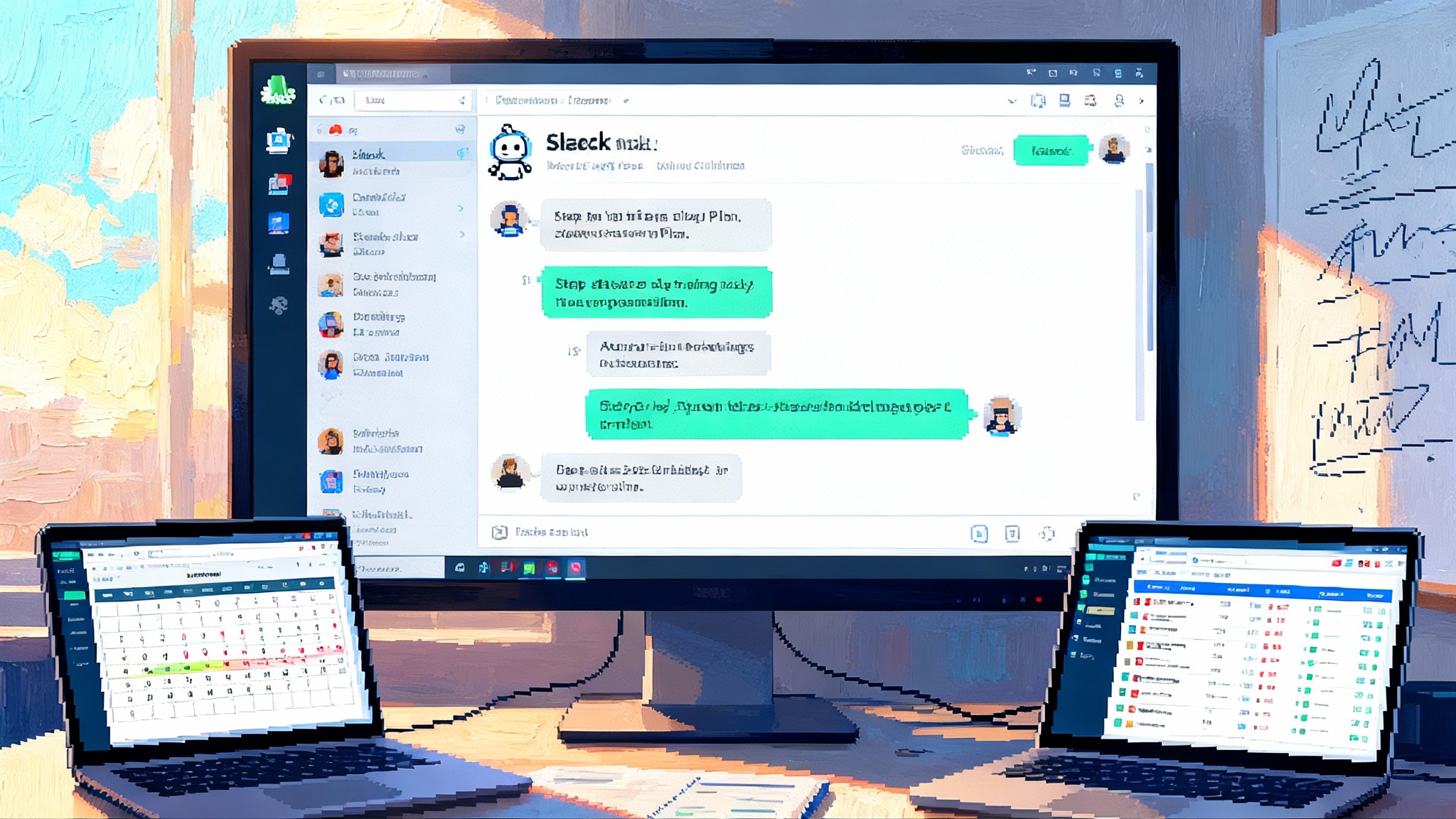Claude Skills Turn Prompts Into a Modular Enterprise Workforce
Anthropic’s Claude Skills shift AI from chatty prompts to governed, pluggable capabilities. With contracts, policies, and observability, teams assemble a modular workforce of task‑specific assistants that can scale with control.

The breakthrough: prompts become production agents
Anthropic’s introduction of Claude Skills marks a practical turning point for enterprise AI. For two years, teams relied on clever prompts and careful instructions, hoping models would behave like dependable colleagues. That era is winding down. Skills let you turn a prompt into a capability with an interface, a policy, telemetry, and a clean handoff to compute or data. It feels less like chatting and more like staffing. You no longer hire a single omnipotent assistant. You assemble a small workforce of specialists that can be audited, permissioned, and swapped without breaking everything else.
At a high level, Skills operate across the Claude application programming interface, Claude Code, and an agent software development kit. A Skill might be as simple as a read‑only database lookup or as involved as running a notebook inside a secure container that crunches millions of rows and returns a chart. The agent orchestrates which Skill to call, the platform enforces what that Skill is allowed to do, and every action is logged for review.
The promise is straightforward. Prompts are intentions. Skills are intentions plus mechanism, guardrails, and proof.
From prompt engineering to capability engineering
Prompt engineering taught us to package intent inside a block of text that nudged the model toward a goal. Capability engineering packages that intent plus enforceable constraints. Think of a Skill like a power tool. A prompt is a suggestion to use the tool. A Skill is the tool with a safety shroud, a manual, the correct plug, and a log of every cut.
In practice, capability engineering means three shifts for teams:
- Interfaces over incantations. A Skill exposes inputs and outputs in a stable schema, not a paragraph of prose that can drift as staff or models change.
- Policies first. Each Skill carries allowed actions, scopes, and resource limits. If a model tries to exceed those limits, the request is paused or blocked.
- Evidence by default. Every Skill call produces structured traces, metrics, and artifacts. That is what auditors, security leaders, and reliability engineers need to ship at scale.
How Skills plug in, call code, and stay auditable
At runtime, an agent selects or is directed to a Skill based on the user’s goal or a plan generated by the model. When the Skill needs to execute code, it does so inside a container built for safety and reproducibility. Imagine a clean kitchen rebuilt for every recipe. Ingredients are measured, burners are capped at a safe temperature, and cameras record every step.
Several design choices make this workable in real production environments:
- Pluggable capability modules. Teams register Skills with a name, version, contract, and tags. Contracts force clarity on what goes in and what should come out.
- Ephemeral code‑execution containers. Skills that run code operate in short‑lived sandboxes with quotas. Memory, CPU, and run time have hard ceilings. Temporary file systems are wiped on exit, which reduces data persistence risk.
- Network and data egress control. Each Skill declares which destinations it may reach. Default is deny. Security teams can enforce allowlists, private routes, or brokered access to internal systems.
- Package and tool allowlists. Only approved libraries are available in the runtime by default. This removes supply chain risk without blocking legitimate work.
- Traceable inputs and artifacts. Every invocation logs arguments, environment details, and outputs. Artifacts like images, tables, and patches are stored with provenance so you can reconstruct what happened.
Together, these pieces let agents act with confidence while giving operators the levers they need to govern risk. The key idea is separation. The model plans and decides, the Skills do, and the platform proves.
A marketplace for Skills and what it could unlock
A marketplace for Skills is a logical next step. This is not an app store for chatbots. It is a catalog of drop‑in capabilities that conform to shared contracts and governance rules.
- Supply side. Vendors and internal platform teams publish Skills that solve narrow problems with strong guarantees. Think invoice parsing tuned to a specific format, redaction that meets a jurisdiction’s privacy rules, or a reconciling ledger export for a finance stack. Each Skill is versioned, certified, and priced by usage or outcome.
- Demand side. Builders assemble agents from proven parts instead of reinventing the wheel. Procurement gets clearer pricing and risk profiles. Security reviews focus on a Skill’s contract and certification rather than a custom blob of code.
- Network effects. Popular Skill contracts drive de facto standards. Competing implementations can exist side by side, which increases choice without fragmenting interfaces.
Short term, expect marketplaces to start private, seeded with vendor and partner Skills that map to high‑value corporate workflows. Over time, public catalogs are likely to emerge with curated tiers, similar to cloud marketplaces. The winning marketplaces will support private listings, private pricing, and automated security attestations that slot into enterprise governance.
Early enterprise patterns to ship this quarter
The clearest advantage of Skills is that they let you ship something safe and useful fast. Here are five patterns that teams can put into production this quarter:
-
Retrieval plus Skills orchestration. Keep your retrieval augmented generation stack, but move parse, transform, and validate steps into Skills. Use a Validate References Skill that checks every citation against a policy. Use a Transform Tables Skill for turning messy spreadsheets into typed frames. These small changes boost reliability and reduce manual review.
-
Finance close copilots with guardrailed exports. Build a Close Assistant that can request specific ledger exports through a Finance Export Skill. The Skill only allows date‑bounded, read‑only queries and emits a checksum for every file. Humans approve any action that would move funds. The audit trail becomes part of the close packet.
-
Sales and success workflows inside CRM and support platforms. Wrap a Case Summarize Skill, a Contract Diff Skill, and a Health Score Refresh Skill. Each is narrow, with explicit data scopes and business rules. Agents chain them to draft updates, propose next actions, and open tasks in the system of record.
-
Developer productivity with real constraints. Use Claude Code for planning and a Code Apply Skill for file edits. The Skill can only touch a declared directory, run unit tests in a container, and raise a pull request with a change log. No direct pushes to main. Every step is logged and reversible.
-
Compliance inbox triage. Stand up an Intake Classify Skill and a Policy Match Skill that map incoming requests to the correct retention or privacy policy. Add a Redact Skill that removes sensitive data before anything leaves the triage system. All redactions are traceable and reversible with correct privileges.
These patterns share a theme. They limit the blast radius, provide immutable evidence, and make human approvals simple. You can start with one Skill and one agent, then expand as confidence grows.
The governance and security model that makes this safe
Moving from prompts to agents often fails not for lack of model quality, but for lack of a governance model. Skills help by putting policy at the center.
- Capabilities as scopes. Each Skill defines exactly what it can do. For example, a Calendar Write Skill can create events only in specific calendars, during specific hours, and only for approved users. The platform enforces this, so the model cannot talk its way around a guardrail.
- Human approvals with context. When an agent requests a high‑risk Skill, the system presents a summary, the inputs, the predicted effect, and a diff of any changes. Approvers get a one‑click accept or reject, and the action is logged either way.
- Dry runs and simulations. Before hitting a production database, a Skill can execute in a simulated environment with synthetic outputs. This reduces surprises and gives engineers a way to validate policies.
- Signed Skills and provenance. Publishers sign their Skill packages and the platform verifies signatures at load and execution time. This helps prevent tampering and supports audit needs.
- Centralized observability. Skill traces, costs, and latencies roll up into dashboards. Security teams get anomaly alerts, like a Skill that suddenly calls a new domain or consumes more compute than usual.
This approach does not remove risk. It puts risk on rails. By making failure modes visible and bounded, Skills make it reasonable to move faster without sacrificing control.
How to adopt Skills without stalling
Enterprises do not need a big‑bang migration to start. A simple path looks like this:
-
Pick a contained workflow with real value and low external risk. Close reporting, policy inboxes, or sales briefings are good first targets.
-
Define two or three Skills with crisp contracts. Keep names boring and precise. Examples: Generate Brief, Transform Tables, Validate References, Export Ledger.
-
Build a staging environment that mirrors production constraints. Treat the container as a production surface even if the data is synthetic.
-
Write policies before prompts. Decide who can call which Skill, what approvals are required, and what should be blocked by default. Document these in code and in plain language.
-
Instrument everything. Set budgets, quotas, and alerts for each Skill. Log inputs and outputs. Store artifacts with provenance.
-
Put a human in the loop for the first month. Capture feedback on misses and false positives. Turn feedback into small Skill upgrades with version bumps.
-
Expand laterally, not vertically. Add adjacent Skills to cover more of the same workflow. Only after a workflow is robust should you hop to a new domain.
The teams that ship first are rarely the ones with the most complex architecture. They are the ones that choose a narrow path and measure relentlessly.
How this differs from earlier tool use
Tool use in language models is not new. The difference now is standardization and proof. In the past, teams wired model outputs directly into scripts or services through general frameworks. It worked, but every project reinvented interfaces and risk models. With Skills, the contract and guardrails are part of the platform. That reduces integration time, shortens security reviews, and makes it possible to reuse capabilities across teams.
This emphasis on modularity with governance mirrors moves elsewhere in the industry. For example, Microsoft’s platform strategy is pushing more first‑class agent integration on the desktop, which we covered in Windows Copilot Actions. And standardization of agent stacks is accelerating, as explored in our look at the AgentKit standard stack. Even productivity suites are reframing their core object model around agents, as discussed in Notion 3.0 agent model.
The thread is consistent. When capabilities are modular, governed, and observable, adoption grows and risk shrinks.
What could go wrong, and how to reduce the odds
No platform decision removes risk. It only changes the shape of the risk. Here are hazards worth planning for now:
- Interface drift. If Skill contracts change frequently, every agent depending on them becomes fragile. Require semantic versioning and give agents a grace period to upgrade.
- Zombie Skills. Old Skills that remain enabled can become attack surfaces. Enforce time‑based or usage‑based retirement and make sunsets visible to owners.
- Prompt injection through tools. Even with Skills, untrusted data can bias the model’s planning. Treat model inputs like untrusted user input, apply strict validation, and favor allowlists over regex sanitizers.
- Supply chain risks in containers. Keep runtimes minimal, verify packages, and scan at both build time and run time. Favor hermetic builds and pin versions.
- Cost sprawl. A handful of noisy Skills can drive up spend. Put budgets and utilization alerts on every Skill, and review cost per outcome, not just cost per call.
A useful guardrail is to embrace small, predictable friction in the platform so you avoid big, unpredictable failures in production.
Competitive context and what it means
The wider market is racing toward agents that can act. Open‑ended chat is giving way to governed agent fabrics that can plan, call tools, and show their work. The differentiators for enterprise buyers will be governance, extensibility, and cross‑surface reach. Skills that work the same way across an application programming interface, an integrated coding experience, and an agent software development kit reduce cognitive load. That consistency also lets platform teams offer shared catalogs, central budgets, and a single way to conduct reviews.
A credible marketplace would amplify this advantage. If buyers can combine vendor Skills with their own private Skills in one governed fabric, they can move faster without fragmenting their stack. The platform that nails contracts, trust signals, and billing becomes the default substrate for enterprise agents.
What to build first if you are a vendor
If you ship software to enterprises, start by turning your three highest‑value actions into Skills. Pick something the model cannot reliably do with text alone. Give each Skill a precise contract, a renderer for artifacts, and a simulation mode for demos. Add usage‑based pricing and clear audit hooks. Make it simple for a platform owner to approve the Skill for a subset of users or tenants. If you solve one painful step in a revenue or compliance workflow, adoption tends to follow.
Consider packaging:
- Data import and export Skills with tight scopes and checksums.
- Redaction and classification Skills that meet specific policy requirements.
- Validation and reconciliation Skills that turn model outputs into signed, reviewable artifacts.
Vendors who treat Skills as products, not features, will find it easier to land in enterprises and expand inside them.
The bottom line
Claude Skills turn agent building into systems engineering. You define what can be done, by whom, with what proof. You move faster because every capability has a contract and every action leaves a trail. That is the core unlock. Instead of hoping a clever prompt will produce a trustworthy result, you staff a modular workforce and you manage it. In a year that demands real deployments, not demos, that shift is the difference between a pilot that stalls and a program that scales.








